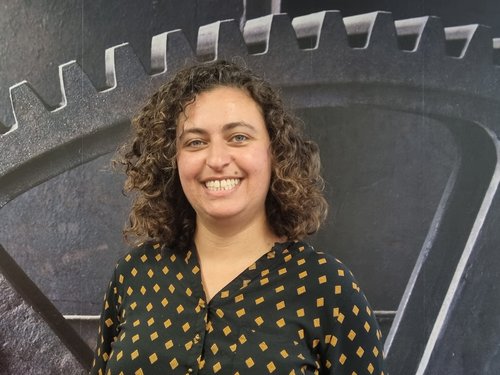A profile on Maia Miller, Accessibility Manager
by Charlotte Weston
Maia Miller’s Canadian accent might be the first thing you notice when you start talking to her about web accessibility, but close behind that is the energy and passion she has for the subject. Maia is the Accessibility Manager at Catalyst in Wellington, and she is passionate about helping people understand the benefits of web accessibility, what it means, and how to do it.
“A lot of people have good intentions about making websites accessible, but don’t really know how to do it,” Maia says. This inspired her to create a training course that’s based on WCAG 2.1 AA guidelines, making it practical and applicable. The courses have been running both online and in person for the last two years and feedback has been extremely positive.
It can take a lot of reading to understand WCAG, so Maia wanted to translate it into something that is useful for people. “The tricky bit is information overload,” she says. “There’s a lot out there, and so many authors with good intentions wanting to share what they know, and it’s good quality, but it’s easy to get overwhelmed very quickly.” As a developer herself, Maia understands that adding it to the mix of competing priorities on a day-to-day basis at work can be overwhelming when you don’t know where to start, and aren’t sure what’s going to have an impact.

Maia Miller, Catalyst's Accessibility Manager
Web accessibility helps a wide range of people, those with disabilities and those who aren’t disabled. Take captions on videos, for example. They were created for a specific purpose, to help those who are deaf or hard of hearing, but it’s something everyone benefits from. You could be trying to watch something in a shared space where noise from your device could be distracting or unwelcome to others.
Being able to modify the screen with things like zooming in, minimising movement on screen, and having good labels on forms makes it easier to understand information, especially for people who are dyslexic. Maia’s twin brother is colourblind, so the importance of accessibility hits close to home in the area of colour and contrast. “When there are dashboards that rely heavily on red and green, he can’t see that, through no fault of his own,” she says. That makes some websites unusable for him.
“I like when the dime drops and it clicks for people,” says Maia. “When people realise it’s not a barrier, but rather it’s an opportunity. It can flow really seamlessly into their work rather than be difficult.” To support organisations and business with making their websites more accessible for their users, Maia conducts system audits and creates bug reports, to impart that knowledge and understanding and help clients reach their goals of having websites that are usable by more people.
An audit report contains actionable steps of how clients can make things more accessible, which is especially vital for government departments needing to meet the requirements of the MSD Accessibility Charter. Improving accessibility for all New Zealanders supports disabled people’s fundamental human rights, and the Accessibility Charter provides a framework to identify, prevent, and remove barriers to participation for disabled people, tāngata whaikaha Māori, and others with accessibility needs. In New Zealand about one in four of our population is disabled. That’s around 1.1 million people.
Maia’s previous work in marketing and communications, and her technical knowledge and experience in web development all come together in her accessibility role. Having done over ten years of public speaking and debating in university, Maia brings her passion and skill to the training courses she runs at Catalyst, as well as to the various conference talks and forums she presents. “It’s really important to me that it’s done in a way that is interesting, captivating, and relevant,” she says.
“Accessible design is about enforcing good habits rather than limiting you, as developers and designers,” says Maia. “Writing good, clean code reinforces best practice, and making clear designs ensures things are communicated in many ways, not just with colour.” Rather than making it more difficult, accessibility makes designs more robust, and more beautiful, as well as useful to more people.
Sign up for one of our upcoming WCAG 2.1 AA Fundamentals courses with Maia here
and find out more about Catalyst's Accessibility services here